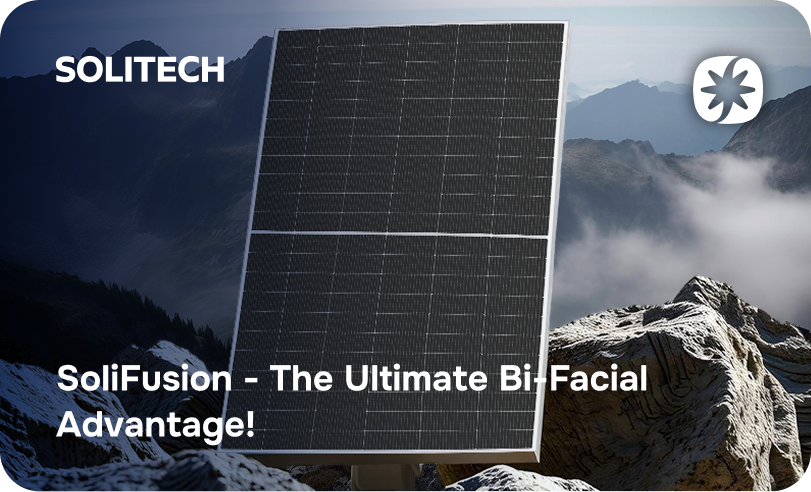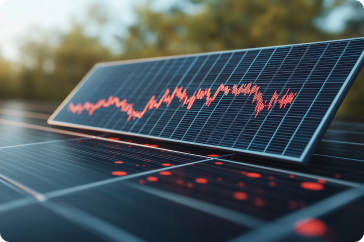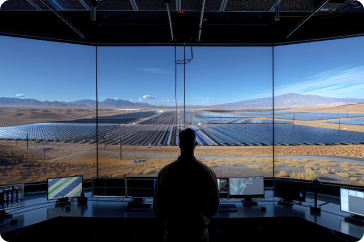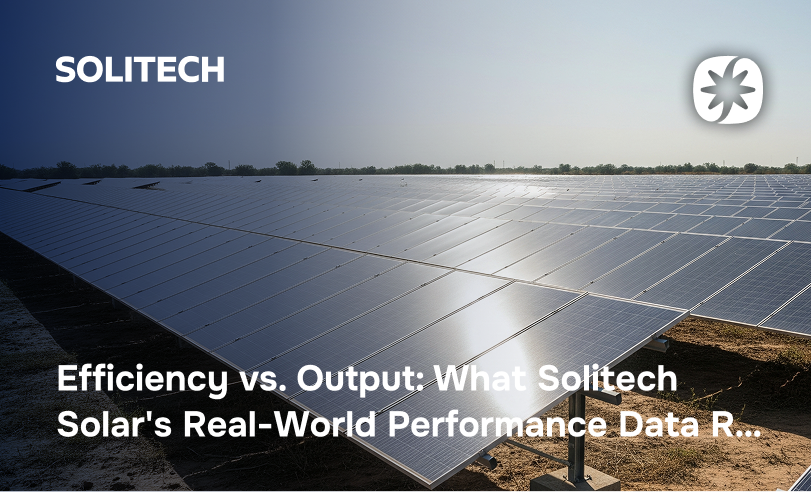
SoliFusion – The Ultimate Bi-Facial Advantage!
An unexpected revolution is about to happen in the solar sector in the next 5 years, and it is almost here. Solitech is also not forgetting to keep walking with it.

The aura of solar power is unexpected. Clean, sustainable energy flowing directly from the sun to power our lives. But when you’re looking at solar panels, one term constantly pops up: efficiency. It’s a crucial metric, promising more power from the same amount of sunlight. But what does solar panel efficiency really mean in the real world, and how do manufacturers like Solitech Solar ensure you’re getting the performance you expect?
we believe in transparency and delivering on our promises. That’s why we go beyond standard industry tests to provide you with a clearer picture of how our solar PV modules perform in everyday conditions. Let’s decode solar panel efficiency and reveal what our rigorous testing procedures tell us about the real-world power you can expect from Solitech.
The efficiency rating of a solar panel, often expressed as a percentage, indicates how much of the sunlight hitting the panel is converted into electricity under Standard Test Conditions (STC). These conditions involve a specific temperature (25°C or 77°F) and a defined amount of sunlight (1000 watts per square meter).

While STC provides a standardized benchmark for comparison, the real world is far more dynamic. Temperatures fluctuate, sunlight intensity varies throughout the day and across seasons, and factors like shading and panel angle come into play. This is where the “myth” can arise a high STC efficiency doesn’t always translate directly to the same level of output in your specific installation.
We understand this discrepancy. That’s why Solitech Solar invests heavily in testing our solar PV modules under conditions that more closely mimic real-world scenarios.
We evaluate how our panels perform during dawn, dusk, and cloudy days when sunlight intensity is lower than STC. This helps you understand the energy generation potential throughout the entire day.
Solar panels, like all electronics, are affected by temperature. Higher temperatures can slightly reduce efficiency. We meticulously measure the temperature coefficient of our modules, providing you with data on how their performance changes with heat. This is particularly relevant in regions like Surat, Gujarat, India, where high temperatures are common.
The angle at which sunlight hits the panel affects its output. We conduct tests at various angles to understand how our modules perform in different mounting configurations and throughout the sun’s daily path.
Solar panels degrade slightly over time. We conduct accelerated aging tests to project the long-term performance and ensure our SoliAstra and other series maintain a high level of efficiency for their expected lifespan.
Being based in a region with intense sunlight and high temperatures, we pay particular attention to how our modules perform under these specific conditions, ensuring they are optimized for longevity and output in environments like Surat and beyond.
What Solitech’s Tests Reveal About Real-World Performance.





When you choose Solitech Solar PV modules, you’re not just getting a panel with a high efficiency rating on paper. You’re investing in a product that has undergone rigorous testing to ensure reliable and consistent performance in the real world. Our commitment to transparency and comprehensive testing empowers you to make informed decisions and maximize the return on your solar investment.

An unexpected revolution is about to happen in the solar sector in the next 5 years, and it is almost here. Solitech is also not forgetting to keep walking with it.

Installing solar is not only enough to reduce electricity bills, but it also has many hidden benefits, one of which is that it increases the value of the property.

You must have heard many times that a solar panel is only useful when its efficiency and output are high. This is a fact. Today, the number of solar companies in the market is increasing day by day. At that time, every company talks more about high efficiency and output.